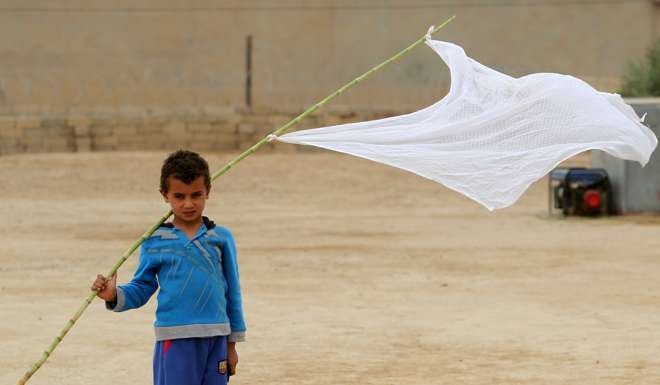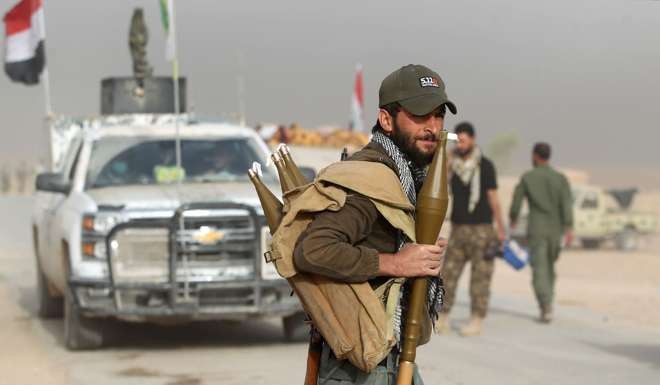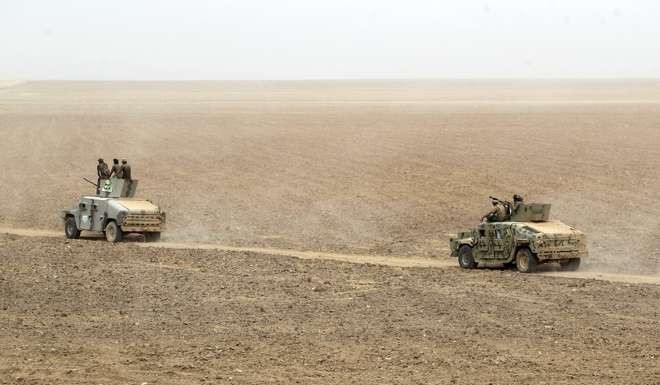
New | Iraqi forces battle their way into Mosul against Islamic State fighters
Iraqi forces fought their way into jihadist-held Mosul on Tuesday, the military said, as a top commander declared the “true liberation” of the city from the Islamic State group had begun.
Just over two weeks into the massive offensive to retake Mosul -- IS’s last major stronghold in Iraq -- soldiers managed to push within city limits.
Troops had “entered the Judaidat Al-Mufti area, within the left bank of the city of Mosul,” said the Joint Operations Command.
Mosul is split by the Tigris River, with the eastern half of the city known as the left bank. Judaidat al-Mufti is on the southeastern side of the city.
Elite Iraqi forces had also recaptured the key village of Gogjali and taken control of a television station building belonging to a local affiliate of Iraqiya state TV on the eastern edge of the city.

Fighters from the US-trained Counter-Terrorism Service had pushed into the area amid heavy fighting on the eastern front in the past two days.
“Now is the beginning of the true liberation of the city of Mosul,” Staff General Taleb Sheghati al-Kenani, the commander of the CTS, told Iraqiya from Gogjali.
“We are working with army units to secure the area and advance on Mosul together,” Muntathar Salem, a lieutenant colonel with CTS told an AFP reporter near the front line.
Soldiers from Iraq’s 16th Division also retook a series of villages north of Mosul, according to the Joint Operations Command, while pro-government paramilitary forces said they captured villages southwest of the city.
Backed by air and ground support from a US-led coalition, tens of thousands of Iraqi fighters have been converging on Mosul.
Since the offensive was launched on October 17, federal forces and Kurdish peshmerga fighters have retaken a series of villages as they advance on the city from the north, east and south.
Some 4,000 to 7,000 jihadists are believed to be in and around Mosul, where IS chief Abu Bakr al-Baghdadi declared a cross-border “caliphate” after the group seized control of large parts of Iraq and neighbouring Syria two years ago.
Colonel John Dorrian, the spokesman for the US-led coalition against IS, said it had targeted the jihadists with “nearly 3,000 bombs, artillery shells, rockets and missiles” since the operation began.
“We’ve taken out hundreds of fighters, fighting positions (and) weapons” in the strikes, Dorrian told AFP.

As his forces advanced, Iraqi Prime Minister Haider al-Abadi warned the jihadists they would have no place to run.
“We will close in on (IS) from every place,” he said on state television on Monday, dressed in a camouflage uniform.
“They don’t have an exit, they don’t have an escape, they can only surrender -- they can die or they can surrender,” said Abadi.
For now the jihadists do have an escape route -- to the west towards IS-controlled territory in Syria.
Paramilitary forces from the Hashed al-Shaabi (Popular Mobilisation), an umbrella organisation dominated by Iran-backed Shiite militia, launched an assault at the weekend to cut off that route.
They have been advancing north, their sights set on the town of Tal Afar which commands the city’s western approaches.
On the northern and eastern sides of Mosul, peshmerga forces from the autonomous Kurdish region have taken a series of villages and towns and consolidated their positions, while federal forces have advanced toward the city from the south.
Iraqi forces are expected to try to open safe corridors for the million-plus civilians still believed to be inside.
Humanitarian organisations have been fighting against the clock to build up the capacity to handle the possible mass exodus from the city.
The United Nations says up to one million people could be displaced in the coming weeks.
Save the Children said Tuesday that up to 600,000 children may be trapped in Mosul, calling for safe routes to be opened for them and other civilians to leave.
More than 17,900 people have already fled their homes since the operation began, according to the International Organization for Migration.

The UN said Tuesday it had received more reports of IS fighters forcing thousands of civilians into Mosul, possibly to be used as human shields.
In the early hours of Monday, IS fighters “brought dozens of long trucks and mini-buses to Hamam al-Alil... south of Mosul, in an attempt to forcibly transfer some 25,000 civilians towards locations in and around Mosul,” said the UN rights office.
Most of the vehicles were prevented from reaching Mosul because of coalition aircraft patrolling the area, it added.
The jihadists also reportedly killed 40 former Iraqi security forces members and dumped their bodies in the river, UN rights office spokeswoman Ravina Shamdasani told reporters in Geneva.
That would bring to 296 the number of former Iraqi security officers killed by IS since last Tuesday, according to the UN.
IS has been losing ground steadily in Iraq since 2015 and the outcome of the Mosul battle is in little doubt, but commanders have warned it could last months.

.png?itok=arIb17P0)